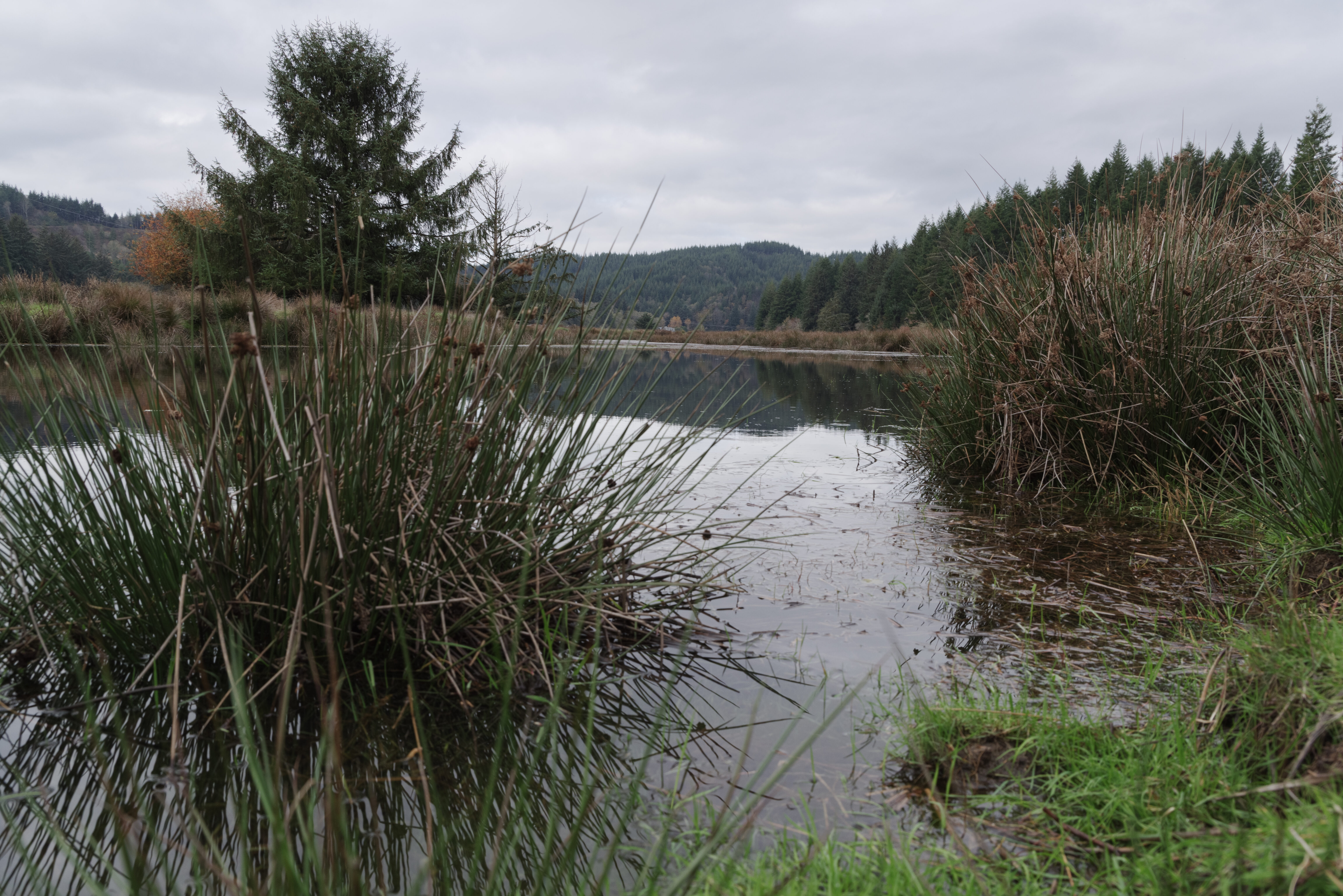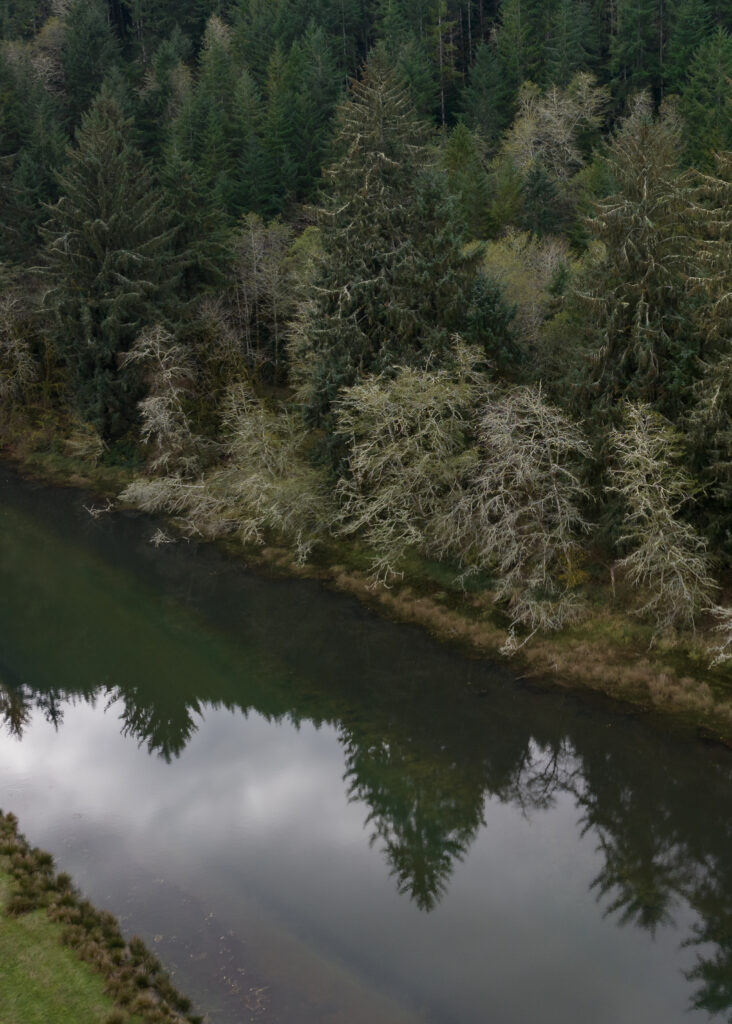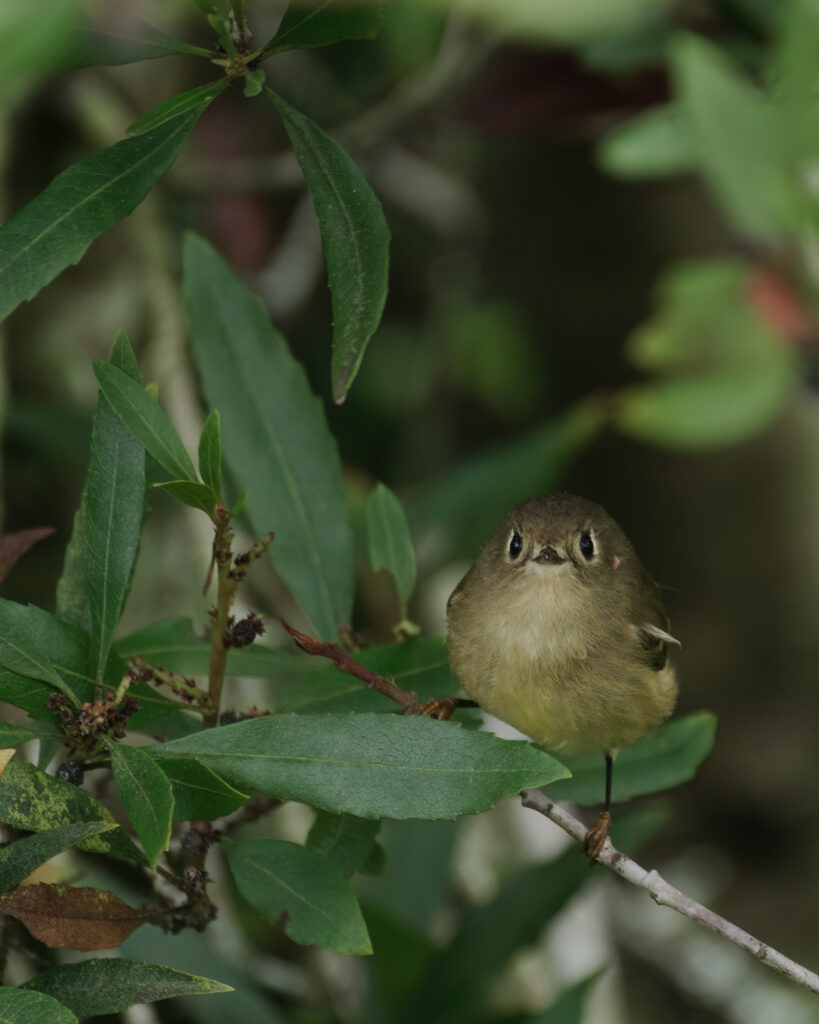Boone Nute Slough
Owned Property
This property was protected in 2023 in collaboration with the Confederated Tribes of Siletz Indians (CTSI), the Wetlands Conservancy, Lincoln County, and The Conservation Fund.

"Plants on the site provide cultural benefits, including gathering of materials for traditional basketry, foods, and medicines, with an access time of less than 60 minutes to more than 2,100 Siletz tribal members and a 15-minute access time to over 700 members.”
– Stan van de Wetering, CTSI Biological Programs Manager
A Special Ecosystem
Oregon’s estuaries are among the most threatened ecosystems in the state. These unique areas provide critical habitats for many threatened and endangered species. Within these estuaries, tidal wetlands provide a variety of other valued ecosystem services, such as trapping sediment, buffering coastal communities from flooding and erosion, and removing pollutants from surface water.
Estuaries provide vital nursery habitat for Oregon Coastal Coho Salmon and are important in their lifecycle. When young salmon transition from fresh to saltwater, tidal wetlands serve as a calm refuge for them to slowly adapt to salinity in the water, and it’s where they have historically gained the most mass thanks to the bounty of food and forage available in these systems.

A Geological Marvel
Boone-Nute Slough is an old meander bend, or oxbow, in the Yaquina River. The area is thought to have been separated from the river during the last Cascadia Subduction Zone earthquake event in 1700 which uplifted the land and cut it off from the mainstem Yaquina River. This event resulted in the creation of two sloughs on the property, Boone and Nute Sloughs, which now drain this abandoned meander bend. Formerly, part of the land was tidally inundated wetlands. In the late 19th century, wetland areas throughout Oregon’s estuaries were drained and diked and converted to pastureland. Before these land conversion activities, the area supported many fish and wildlife species and served as a gathering place for local Indigenous peoples.
The largest wetland in the Yaquina River Estuary, Boone-Nute Slough was identified as a high-priority restoration site in The Wetlands Conservancy’s 2011 Lower Yaquina Conservation and Restoration Plan, as well as in many plans associated with Oregon Coastal Coho Salmon recovery. This conservation transaction includes the largest single property within the area.
A Refuge for Wildlife

The site currently has high use by migratory and other birds, native amphibians and mammals, and is within the Audubon Society’s Yaquina Bay Important Bird Area (IBA), which covers tidally influenced submerged lands of the Yaquina River estuary. The Yaquina IBA regularly hosts thousands of waterfowl and shorebirds, including Brants, Brown Pelicans (previously ESA listed), Herriman’s Gulls, Marbled Murrelets (ESA listed), and Sooty Shearwaters. Research indicates Coho smolt use Boone and Nute sloughs as a feeding source as insects are regularly flushed out of the sloughs through tide gates and into the main channel where smolt congregate to forage on the flushing nutrients. Some native plants are already on site, and soil salinity and water conditions set the stage for successful native plant restoration.
A Common Purpose
With funding support from the Meyer Memorial Trust, The Wetlands Conservancy, and generous donors, McKenzie River Trust acquired the property in partnership with the Confederated Tribes of Siletz Indians who are interested in property as a place for restoring cultural connections between tribal members and their ancestral homelands. The Trust will hold the property in fee title until a transfer to the Confederated Tribes of Siletz Indians is possible. This acquisition of the largest piece of property in the Boone-Nute Slough meander bend has been a positive collaboration between The Conservation Fund, former landowners, McKenzie River Trust, and the Confederated Tribes of Siletz Indians.
Protecting Oregon's Central Coast
Oregon’s central coast boasts some of the most breathtaking landscapes found in the Pacific Northwest. With miles of uninterrupted sandy beaches and dunes that flow abruptly into towering cliffs, it is no wonder that Oregonians from across the state make time to visit these incredible landscapes throughout the seasons. Host to some of the most productive ecosystems on the planet, our coastal lands and rivers provide not just for people, but for plants and animals of all shapes and sizes. Learn more about how your support of McKenzie River Trust is making a difference for Oregon’s central coast today!
